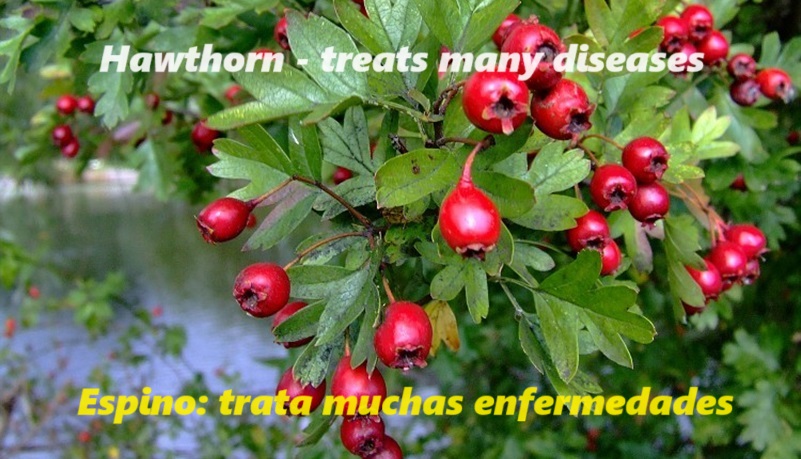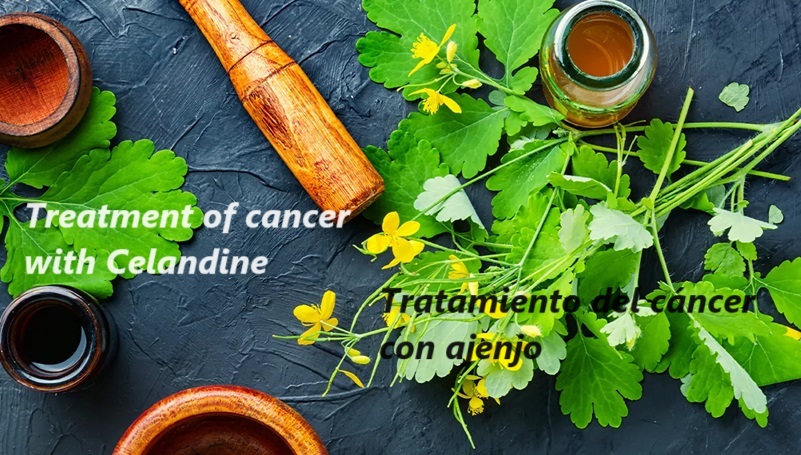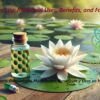Hello dear readers. Today, we will talk about the plant hawthorn, including its beneficial properties and contraindications. Near our house, there is a magnificent hawthorn bush. When you walk past it, the bright red hawthorn berries catch your eye. To be honest, I am more familiar with this shrub under another name, “glog.” That’s what my grandfather called it. Every year, he would gather the red hawthorn berries, dry them, and make an infusion and tincture. My husband, on the other hand, says that this plant was called “gleden” in his area. He loved eating gleden berries after the first frosts. I remember eating these fruits too; they only become tasty after the first frost, acquiring a sweet taste only after being frosted. The hawthorn fruit is soft and mealy.
Hawthorn shrubs can grow up to 4 meters in height. The leaves are green, alternate with a large-toothed edge. Hawthorn flowers are white and gathered in corymbose inflorescences. The fruits are red, spherical, small, and fleshy. Hawthorn begins to bloom in May, and the fruits ripen in August-September. Our hawthorn fruits have already ripened this year. This summer has been abnormal; there was no spring at all. Many joked, “from winter to summer.” So, everything ripens a month earlier than usual, and hawthorn is no exception.
Ripe hawthorn fruits are safe to eat; they are edible, but they become sweet after the first frost. In terms of their beneficial properties, hawthorn is not inferior to rose hips. Hawthorn fruits are rich in vitamins, containing vitamin A, C, P, tannins, pectins, fructose, flavonoids, and organic acids.
Hawthorn fruits can be eaten by those with diabetes. I remember my grandfather loved hawthorn very much, saying it was full of vitamins. He tried to stock up on these red berries for the winter. Both the fruits and flowers of hawthorn are harvested and used in folk medicine. The time for harvesting flowers is May-June, and for fruits, it is September. The raw materials are dried by spreading them in a thin layer on cloth or paper in a well-ventilated room or under a canopy. They can also be dried in a dryer. Flowers are stored in a cotton bag for up to one year.
Dried fruits are stored in cardboard boxes, a jar with a tightly closed lid, or a crate. The shelf life of hawthorn fruits is one year. Hawthorn fruits are used in cooking. You can make jam, jelly, sauce, compote, and juice from them.
Hawthorn Benefits:
- Helps remove toxins, waste, and heavy metal salts from the body,
- Useful for diarrhea, acting as an astringent,
- Used for insomnia,
- Very beneficial for heart diseases,
- Lowers high blood pressure,
- Normalizes heart rhythm,
- Helps relieve headaches and dizziness,
- Has antispasmodic properties,
- Has vasodilating effects,
- Has mild diuretic effects,
- Reduces cholesterol levels in the blood,
- Positively affects brain function and improves memory,
- Acts as a sedative for irritability, anxiety, and nervousness,
- Regulates blood sugar levels in diabetes,
- Known as “heart bread” for its positive effects on cardiovascular diseases.
Hawthorn Uses: Hawthorn fruits are used for insomnia. The fruits are mixed in equal proportions with mint leaves and fireweed. Two tablespoons of the mixture are poured with half a liter of water, boiled for a few minutes, infused for 20 minutes, and strained. Honey can be added to taste. Take 200 ml of the infusion before bed.
To prepare a hawthorn infusion: 2 tablespoons of fruits are poured with 2 cups of boiling water and infused in a thermos for 2 hours, then strained. Take three tablespoons three times a day before meals.
For those who have had a heart attack, it is necessary to drink hawthorn infusion or hawthorn tea. Hawthorn flower tea, made by infusing 1 tablespoon of flowers in 200 ml of boiling water for 20 minutes and straining, is effective for insomnia, calming the nerves, and lowering blood pressure. Honey can be added to taste. Additionally, viburnum, whose beneficial properties, treatment, and contraindications are described in an earlier article, also effectively lowers blood pressure.
At home, hawthorn tincture can be prepared with alcohol. To do this, 100 grams of hawthorn fruits are sorted, washed, mashed, and poured with 1 liter of alcohol. Leave in a dark, cool place for 20 days. After 20 days, strain the tincture, resulting in a yellowish-red transparent liquid. Take the tincture diluted with a small amount of water, 20 drops 3 times a day.
Hawthorn Contraindications:
- Contraindicated during pregnancy and breastfeeding.
- In case of allergy or individual intolerance to flowers or fruits.
- Do not overuse hawthorn preparations; follow instructions when making tinctures and infusions.
Hawthorn’s beneficial properties and contraindications are now known to you. However, before using hawthorn preparations, it is advisable to consult with your healthcare provider.






